Tomatoes may be the highlight of the summer garden, but beneath their shiny red skins lies a world full of strange, wonderful, and truly surprising facts.
Today, we’re going to uncover all the juicy details about the tomato’s secret life—where hairy stems, massive blooms, and sticky plant “tar” make an appearance.
Useless facts? Hardly.
Next time you’re at a garden party or backyard BBQ, casually drop these tomato tidbits and impress your friends with your vegetable (or is it fruit?) knowledge!
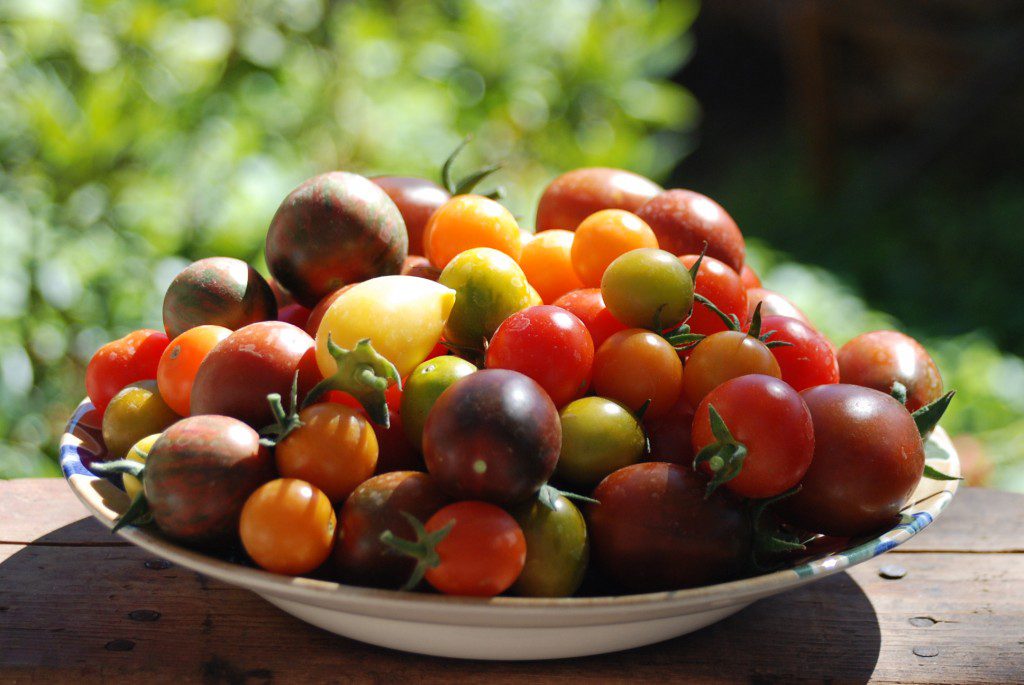
A Brief and Juicy Tomato History
Wild, vining tomato varieties bearing tiny fruits originated in the Andes Mountains of South America long before humans started cultivating them. It was around 500 BCE in Mesoamerica that the Aztecs of Mexico domesticated the tomato, transforming it into the queen of the garden that we recognize today.
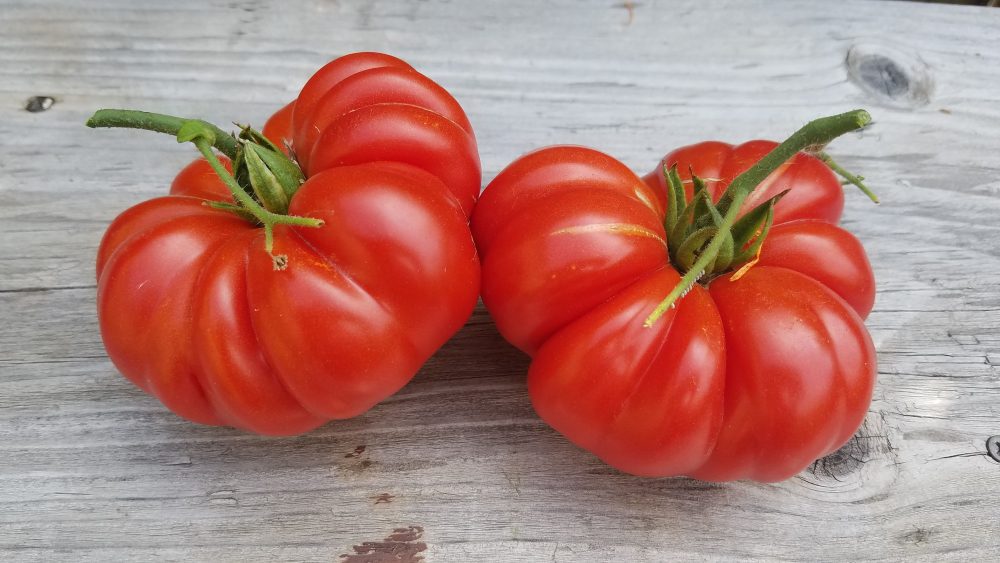
The Spanish were the first to introduce tomato seeds to Europe after their conquest of the Aztecs. However, not everyone was eager to eat the fruit; it was believed to be poisonous, often being called the “poison apple.”
Suspicion was widespread, and for good reason. Tomatoes belong to the nightshade family (Solanaceae), which includes peppers, eggplant, potatoes, and their toxic relative, belladonna.
To make matters worse, many people became ill after eating tomatoes from lead-heavy pewter plates; the acidic juices caused the lead to seep into the food, causing lead poisoning. Once better serveware was found, tomatoes regained popularity and became a key ingredient in Italian and many other cuisines.
Tomato Identity Crisis: Fruit, Berry, or Veggie?
From a botanical perspective, the tomato is a fruit, specifically a berry (a fleshy fruit with seeds). However, in 1893, the U.S. Supreme Court classified tomatoes as a vegetable. The reason? Tariffs. At the time, there was a tax on vegetable imports, but none on fruit. This classification still applies today in legal and trade contexts.
It’s probably no surprise that tomatoes are the most widely grown vegetable in the world, but did you know there are over 10,000 varieties?
Tomato diversity includes wild species, heirlooms, and hybrids. Tomato breeders constantly cross-breed and select specific traits for new varieties in various shapes and colors, often incorporating wild strains, which provide drought- and pest-resistance to modern strains.
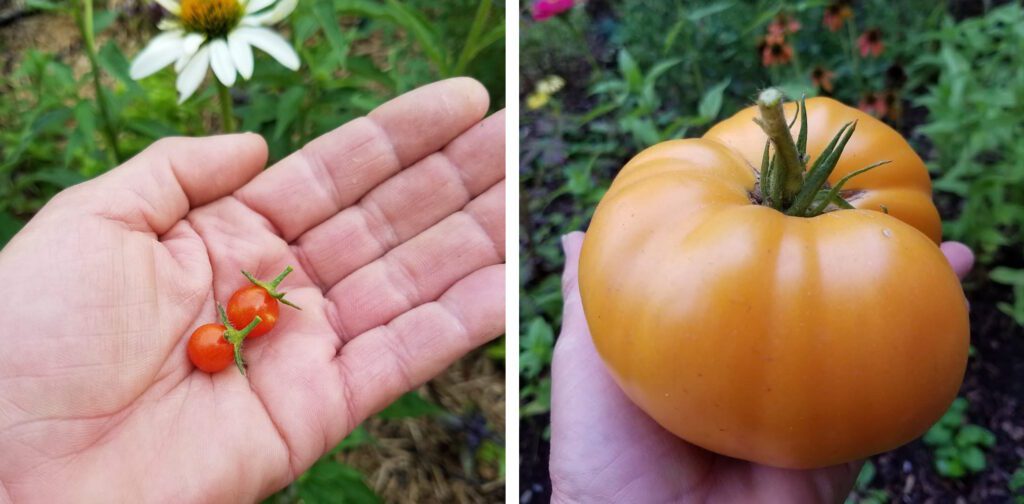
Fruit sizes range from tiny currant tomatoes, about the size of a pea, to massive beefsteaks weighing over two pounds. According to the Guinness World Records, the largest tomato ever grown weighed 11.65 pounds, grown in Stillwater, Minnesota, in 2022 – that’s more than most newborns weigh!
Beyond Red: A Rainbow of Tomato Colors
While red tomatoes are the most common, today you can grow them in nearly every color: red, white, blue, black, brown, yellow, pink, orange, and green, with skins that are striped, speckled, or swirled!
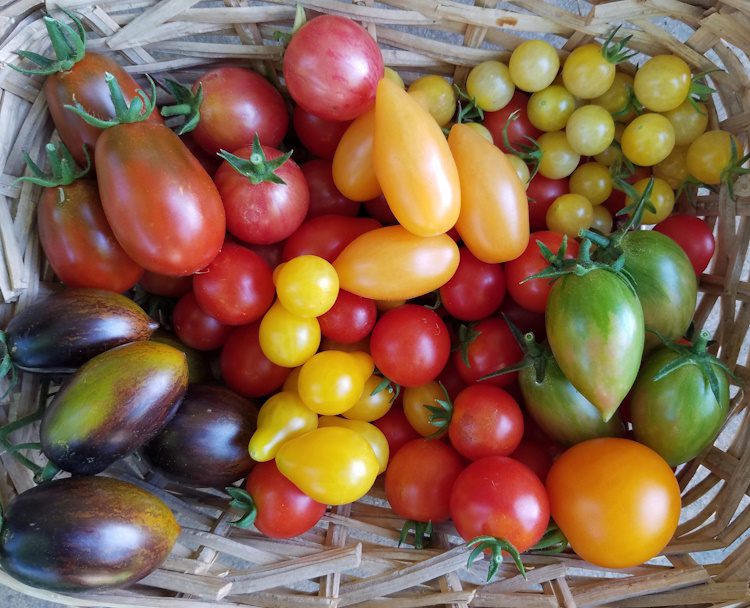
The combination of skin and flesh colors creates these striking shades. For example, red tomatoes result from yellow skin over red flesh, while pink or crimson tomatoes, such as Pruden’s Purple or Pink Brandywine, have clear skin over red flesh.
Purple or black tomatoes, like Black Cherry, have clear skin with deep crimson flesh and hints of green pigment. Brown tomatoes, like Cherokee Chocolate, have yellow skin over similarly crimson-green flesh.
The shades of yellow and orange are many, but the results depend on whether the skin is clear over yellow flesh or yellow over yellow. White tomatoes – yes, there is such a thing – have nearly white flesh and clear skin. Green tomatoes (their natural color when fully ripe) can have either clear or yellow skin over green flesh.
Finally, the blue tomato, like Indigo Rose, has red or pink flesh, but its skin is rich in anthocyanins that give it a blue color (similar to blueberries).
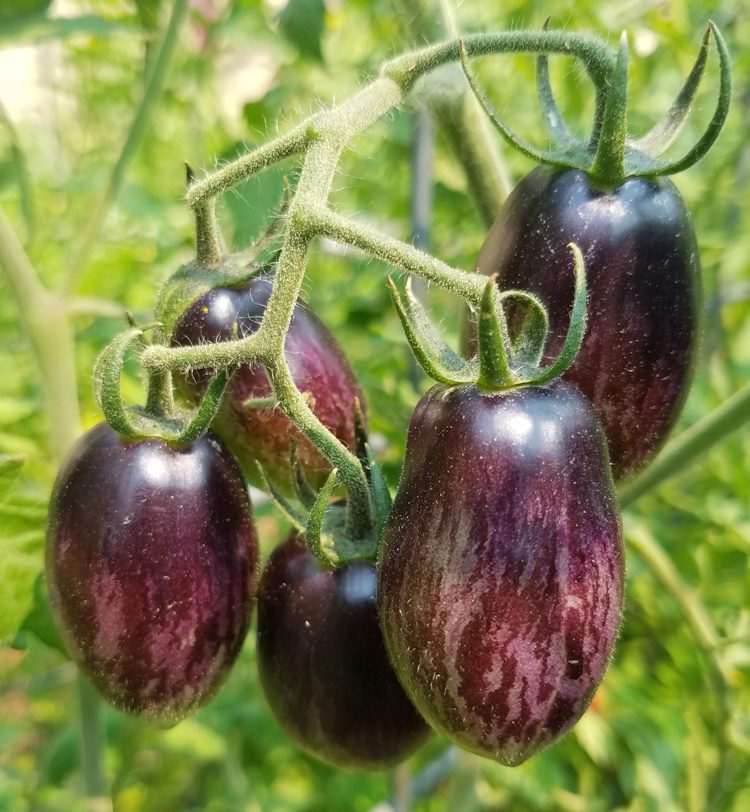
From Flower to Fruit: The Tomato’s Quirky Growing Habits
Tomatoes are self-pollinating, meaning the blossom contains both male and female parts and doesn’t require pollination by insects to produce fruit. Often, pollination happens before the flower even opens.
Gardeners often flick the flower cluster to help with pollination. And here’s a TMI fact: some use a vibrating pollination stick to get the job done—tickling your tomato’s fancy—so to speak.
Sometimes, pollination goes a bit wonky due to weather or other genetic factors, resulting in quite unusual outcomes. For example, the “megabloom” happens when multiple blossoms fuse into one large, dandelion-like flower. When fruit develops from this bloom, it produces a gigantic, misshapen tomato called a catface.

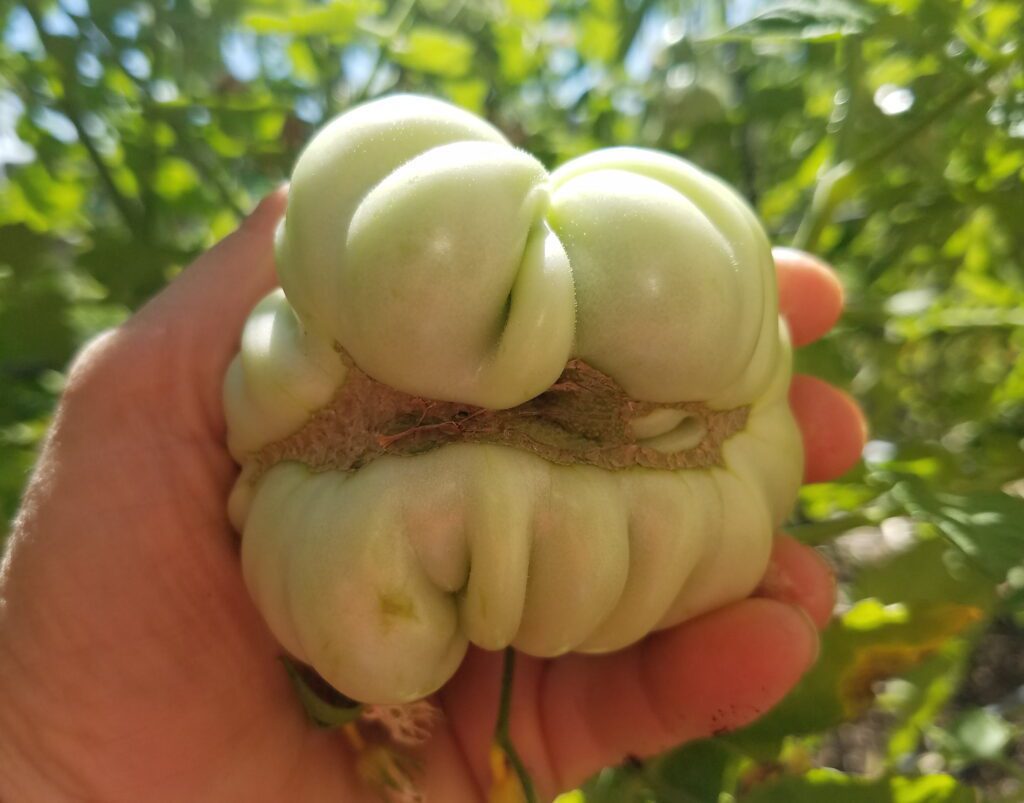
Another tomato oddity caused by weird pollination is zippering. Usually found on large tomatoes, zippering happens when the stigma from the blossom gets stuck on the developing fruit, and as it grows, it leaves a Frankenstein-like scar. Creepy.
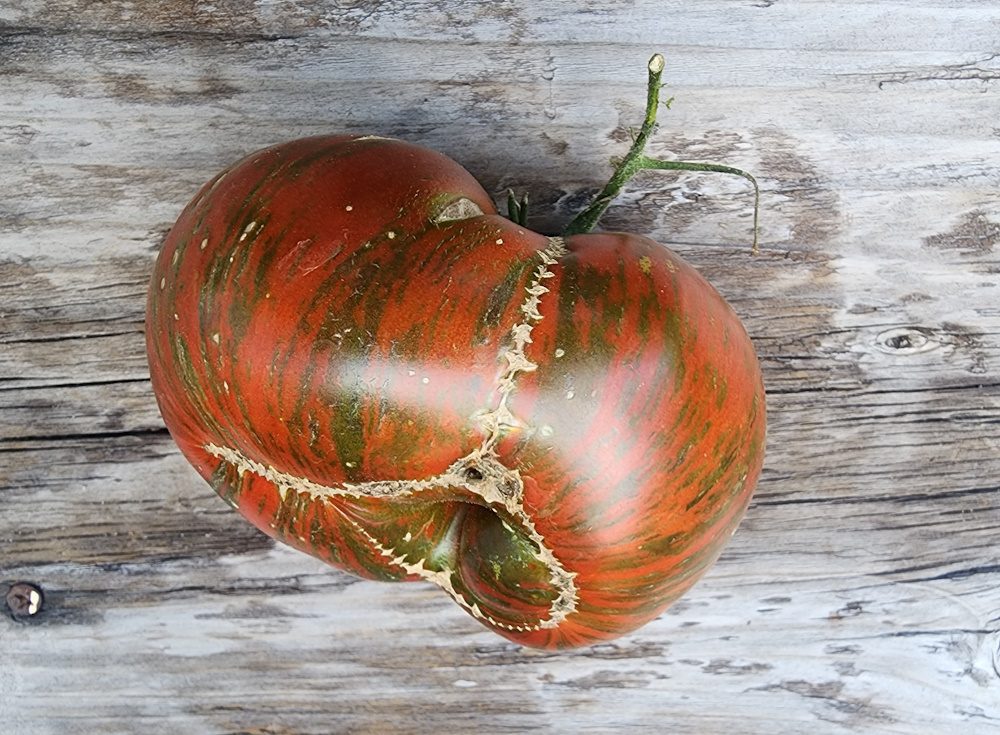
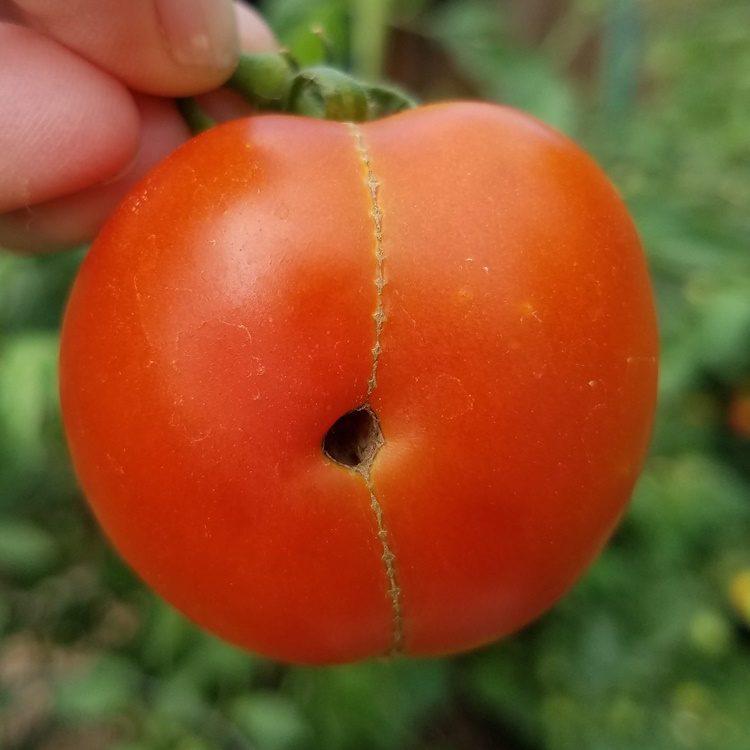
Tomatoes tend to be the prima donnas of the garden and require specific temperatures for pollination and fruit ripening. Did you know that tomatoes will stop ripening if temperatures exceed 85 degrees? At high temperatures, the production of lycopene and carotene, the pigments responsible for color, drops. As a result, the fruit may stay pale yellow or remain green.
Since temperatures above this threshold are typical in late summer when most large tomatoes ripen, it’s best to pick them at the “breaker” stage—when that first blush of color appears. At this stage, the tomato has finished growing and can fully ripen off the vine—another nifty fact: Any fruit or vegetable that ripens off the vine is called climacteric.

Hairy Stems, Sticky Tar, and Root Magic
Have you noticed how hairy your tomato plants are? They’re like the “Cousin It” of the veggie patch. Look closely, and you’ll see fine hairs, called trichomes, on the stems, leaves, and sometimes on the fruit, especially when it’s developing.
These hairs defend against pests, diseases, and environmental stressors—helping the plant sense sunlight, temperature, and when it’s touched.
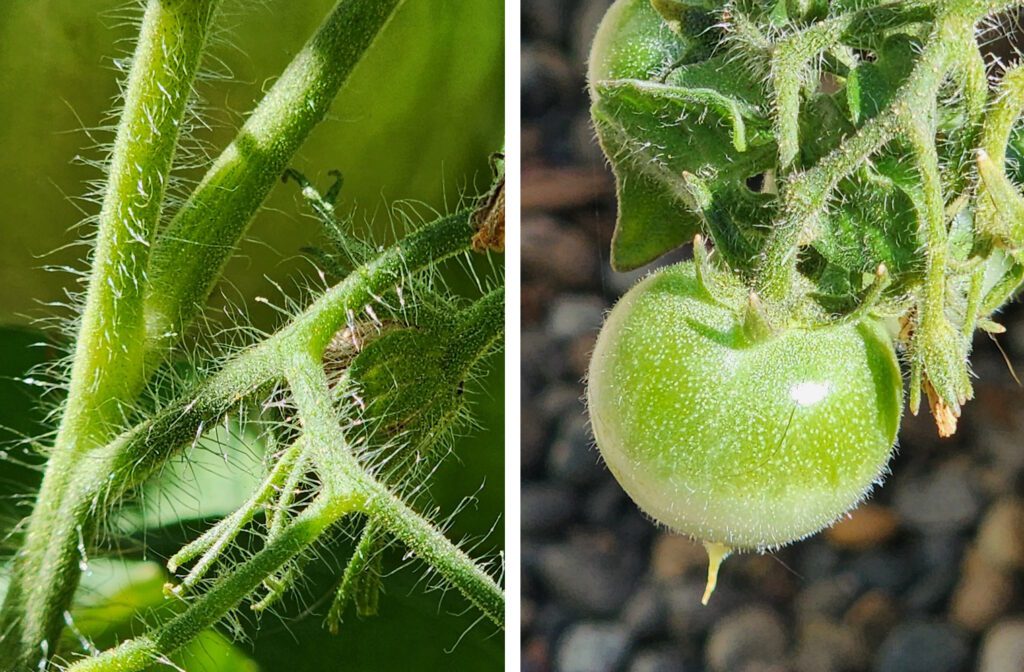
And that distinctive “tomato scent?” It comes from the trichomes, which effectively deter certain pests, and the sticky substance they produce can also trap them.
That substance, a sugary exudate, is called “tomato tar” and can turn your fingers yellowish-black. Removing it is challenging, but a little lemon juice or vinegar usually does the trick.
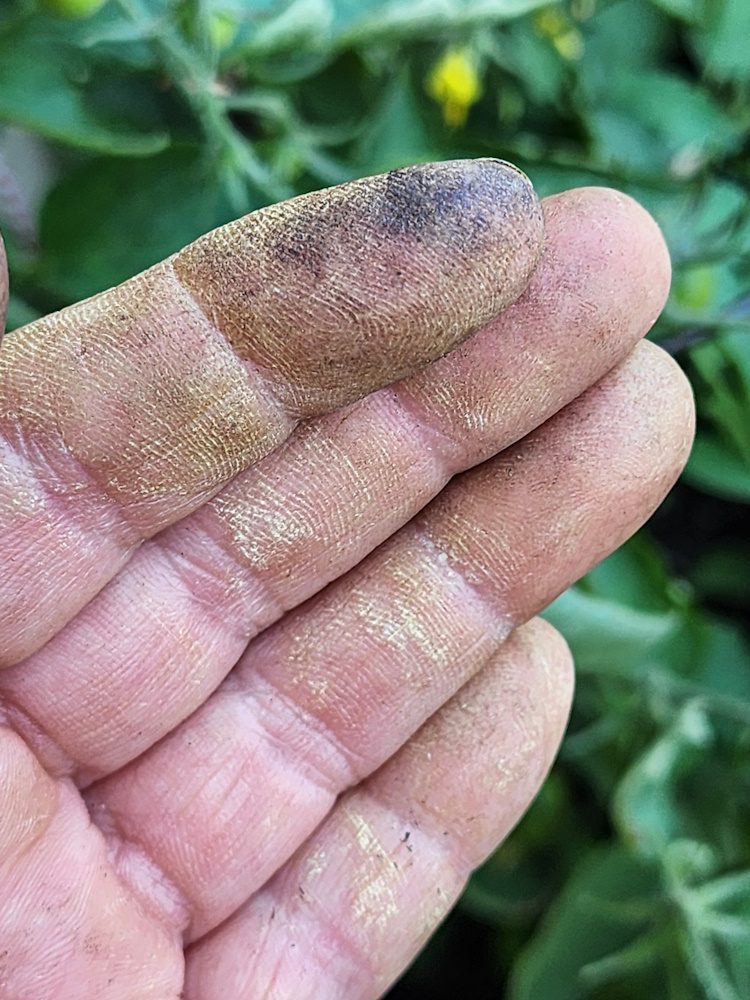
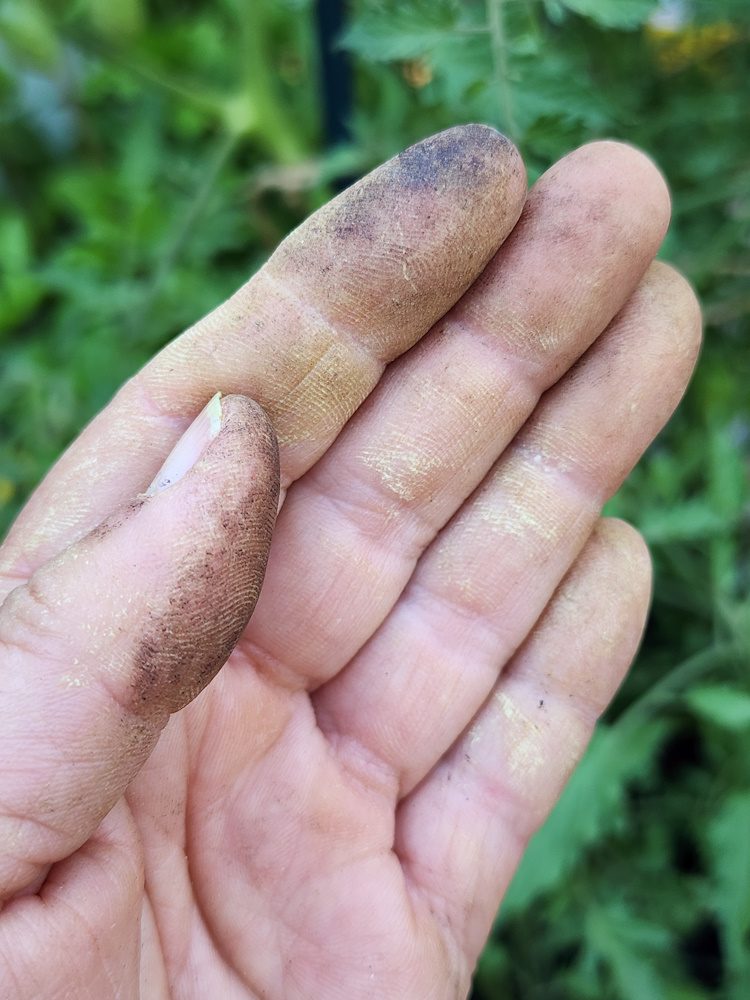
As cool as trichomes are, these hairs will not turn into roots when buried. No, that’s the job of parenchyma cells, specialized cells along the stem. These cells adapt based on the plant’s needs—above ground, they facilitate photosynthesis and store nutrients and water; below ground, they develop into roots.
And speaking of roots, did you know you can graft a tomato plant onto a potato plant? It’s true — with a “TomTato,” you can get ketchup and fries from one plant!
The relationship between these two species is longstanding, as it was recently discovered that potatoes originated from a cross between a wild tomato and the tuber-bearing Solanum tuberosum, nearly 9 million years ago.
Now go ahead and impress your friends with your tomato knowledge. Remember, next time you pick a sun-kissed tomato—whether it’s a tiny currant, a deep purple-black beauty, or a catfaced whopper—you’re holding centuries of history, a splash of science, and just a touch of delicious weirdness.
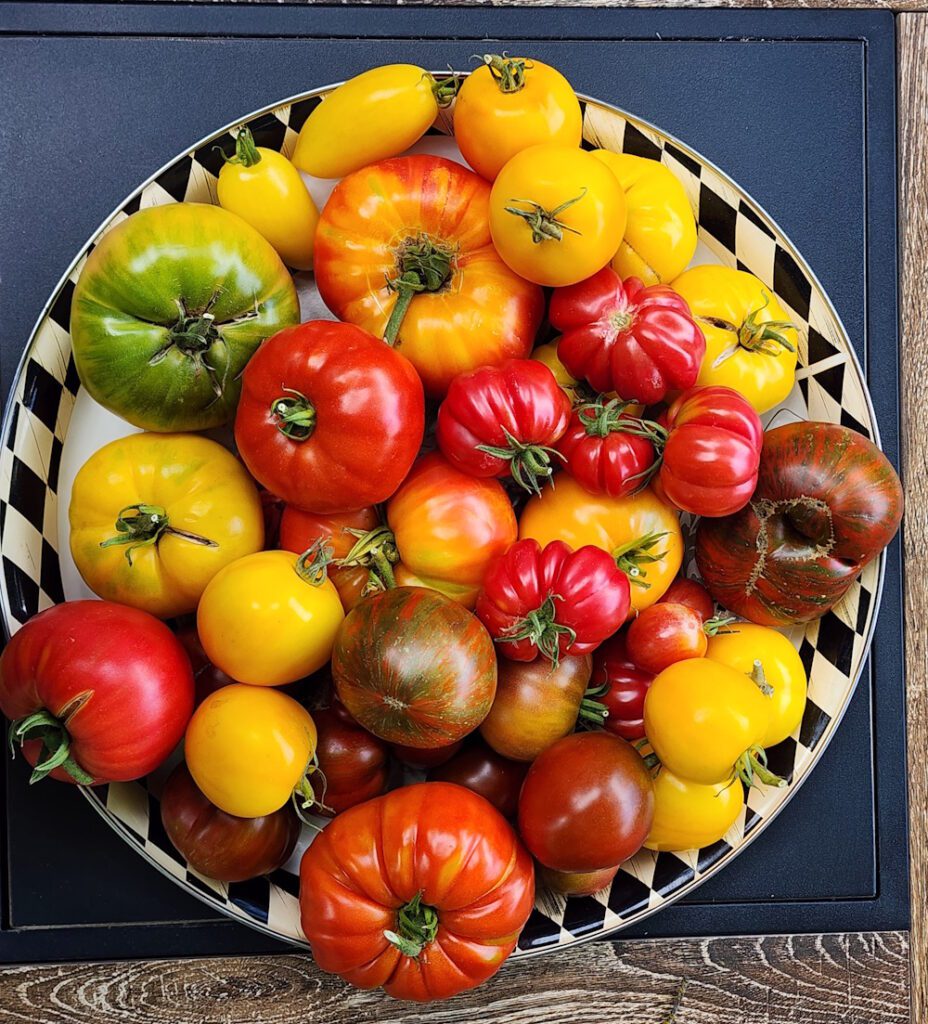


Leave a Reply